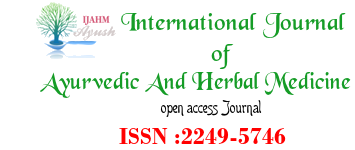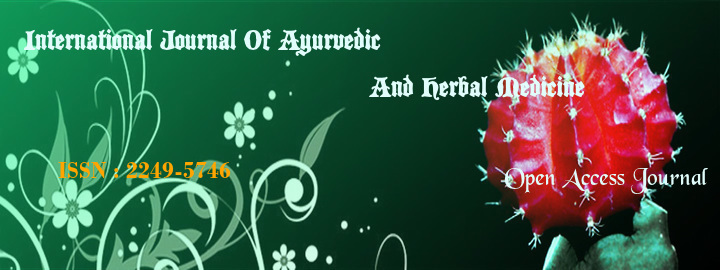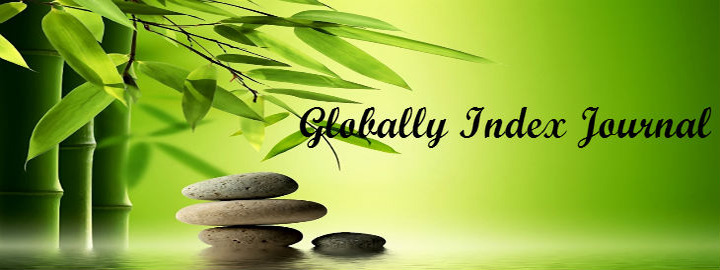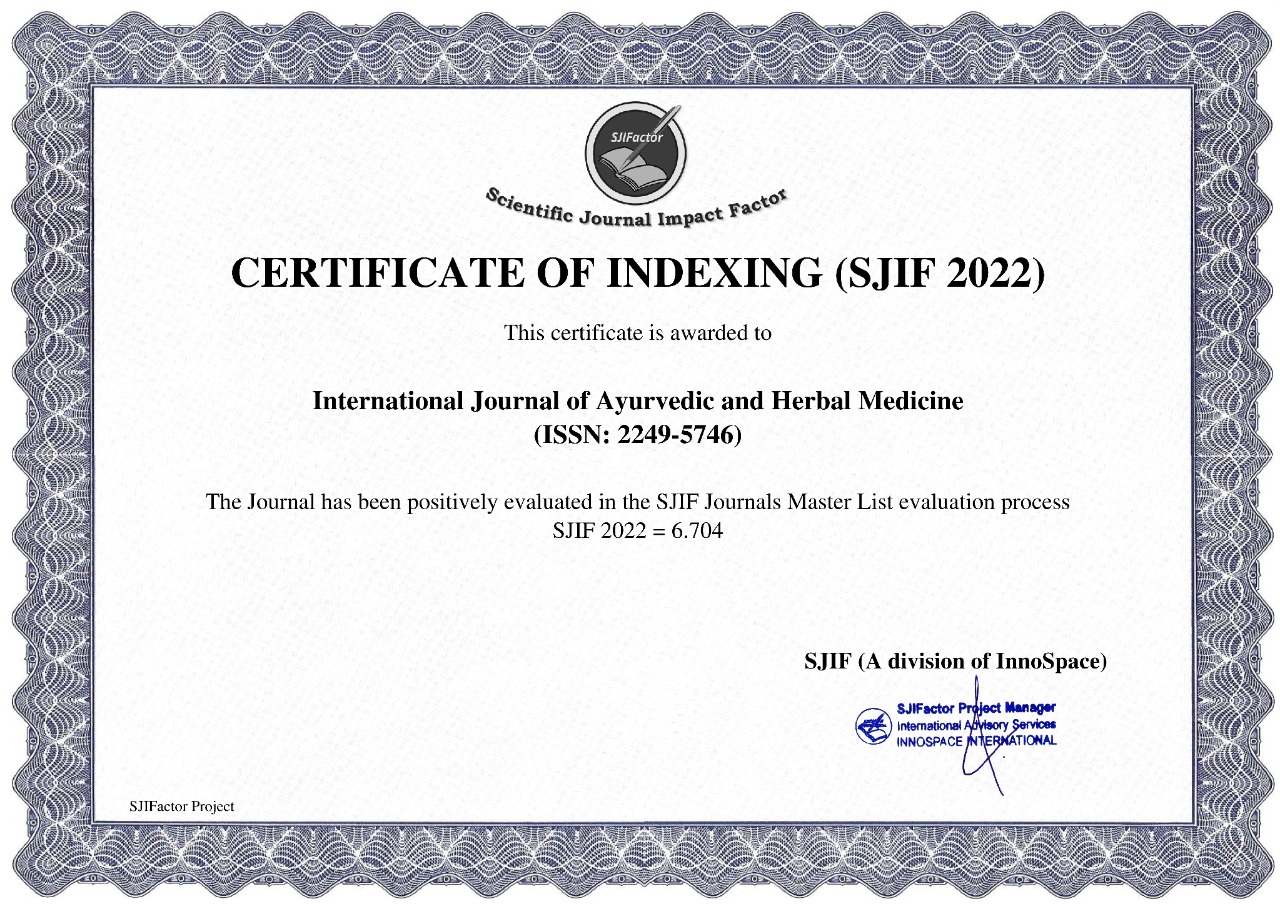


Bhagwan M. Waghmare1, Rahul K. Dhabale2
1,2Botany Research Centre, Department of Botany, Maharashtra Mahavidyalaya, Nilanga. Dist. Latur (M.S.) India.
E-mail :- This email address is being protected from spambots. You need JavaScript enabled to view it.
Abstract
The flavonoids and phenols are very significant phytoconstituents having ability to play important role in control and prevention of tissues damage by activated by oxygen species.
Amorphophallus campanulatus (Roxb.) was analysed for flavonidal compounds (FC) by usining absorbance of different concentration (20 to 100 µg/ml) in term of rutin and total phenolic compounds (TPC) was calculated in form of catechol equivalent. TLC study methanolic and petroleum ether corm extracts were conducted for quantification of flavonoids in mg per gram of Rutin equivalent determined from test extracts. The results indicated that, methanol exctracts of A. campanulatus (Roxb.) contain 88 mg/g of Rutin equivalent while, minimum amount of flavonoids was found in petroleum ether extract.
Similarly, to calculate quantification of phenolic compounds from test extracts by using the absorbance of different concentration 0.5 to 2.5 µg/ml of Catechol as phenolic compound obtain from corm extracts of methanolic was 2.0 mg/g of Catechol equivalent. While, petroleum ether extract found to be 1.0 mg/ml.
Introduction
Today attention has been focused on such species which have reactive oxygens and free radicals are which play vital role in the genesis of varied diseases which are imflammation, cataract, liver cirrliosis, reperfusion injury, cancer and others (Halliwel et.al., 1994).
The herbal drugs have such phytoconstituents are the gaining importance in the prevention and treatment of various organ toxicities due to xenobiotic challenges or environmental challenges.
A. campanulatus (RoxB.) from family Araceae a tuberous, stout indigenous herb commonly known as elephant foot yam, suran, grown as vegetable is widely available (Ghani A.; 1998) and is reported to contain flavonoids (Shilpi J.A., et.al., 2005). In Ayurvedic System of Medicine, tubers of A. campanulatus (RoxB.) has been indicated in treating various above mentioned patho-physiological conditions due to Rective oxygens species (ROS) (Narayana Das Prajapati, et.al., 2004; Sivaraj V.V., 1994; Kirtikar K.R. et.al., 1987; Nadkarni K. M. et.al., 2000; Guha Bakshi D.N. et.al., 1999; Pullilah T., 2000). Tubers are reported in management of haemmrroids (Vastrad C.S., et.al) to have antiprotease activity (Pratibha S., et.al., 1995), antimicrobial activity (Alam Khan. et.al., 2008) and analgesic activity of its methanolic extract (Shilpi J. A. et.al., 2005).
This exhaustive literature survey revealed that the tubers (corm) are not yet screened for its quantitative evaluation of Flavonoids and Total Phenolic contents of the extracts of the corm. Hence in the present study an attempt is made to standardize the corm of A. campanulatus (RoxB.) in terms of its Flavonoidal content and Total Phenolic content
References
1. Alam Khan, Moizor Rahman, Islam M.S., Indian J Pharmacol, 2008, 40(1), 41.
2. Ghani A., Medicinal plants of Bangladesh, Dhaka, Bangladesh, Asiatic Society of Bangladesh, 1998, 77.
3. Guha Bakshi D. N., Sensarma P., Pal D. C., A Lexicon off Medicinal Plants of India, Naya Prakash, Calcutta, India, 1999, 127.
4. Halliwell H., Lancet, 1994,344, 721.
5. Kirtikar K. R. and Basu B. D., Indian Medicinal Plants, Interantional Book Distributors, Dehradun, 1987, IV, 2609.
6. Nadkarni K. M. and Nadkarni A. K., Indian Material Medica, Popular Prakashan Pvt. Ltd., Mumbai, 2000, 94.
7. Narayana Das Prajapati, Purohit, S.S., Arun K. Sharm, Tarun Kumar, A Hand Book of Medicinal Plants – A complete source book, Agrobios (India), Jodhpur, 2004, 41.
8. Pratibha S., Nambison B., Leelamma S., Plant Food Alum Nutr., 1995, 40(1), 247.
9. Pullaiah T., Medicinal Plants of India, Regency publication, New Delhi, I, 2000, 49.
10. Shilpi J.A., Ray R. K., Sarder S. J., Vddin S. J., Fitotheropia, 2005, 76 (3-4), 367.
11. Shivraj V. V., Indira Balachandran, Ayurvedic Drugs and Their plant sources, Oxford and IBH publishing Co. Pvt. Ltd., New Delhi, Bombay and Calcutta, 1994, 457.
12. The Wealth of India Raw Material, CSIR, New Delhi, 2003, 1 : A, 233.
13. Vastrad C.S., Pakkanavar R.V., Antiseptic, 99(9), 343.
index























